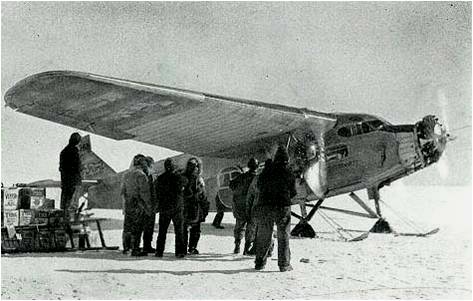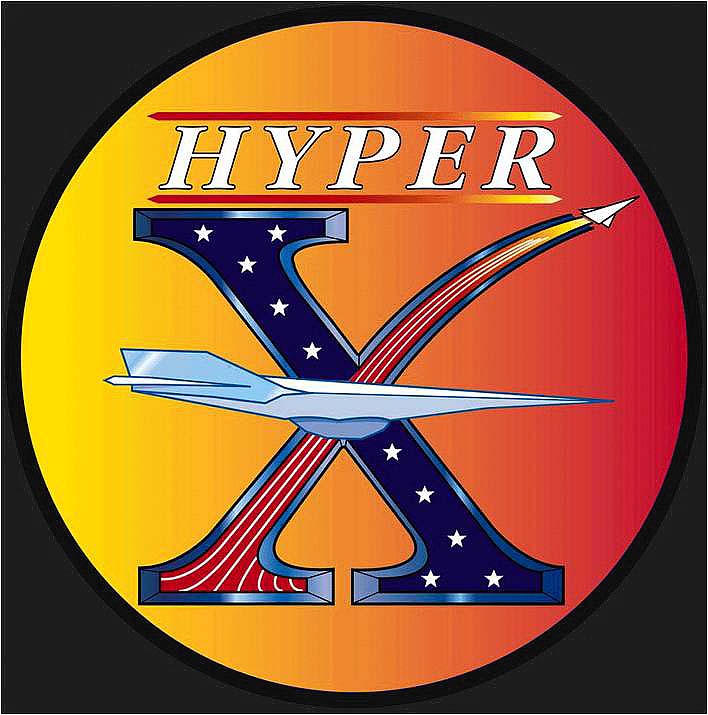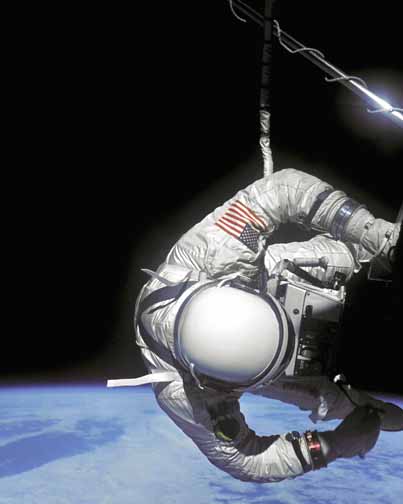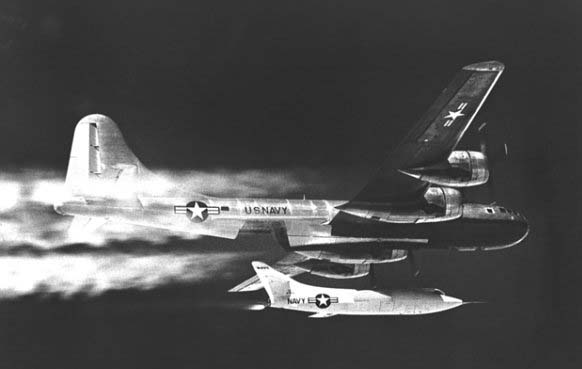
Eighty years ago this month, a four-man crew became the first Antarctic explorers to fly over the Earth’s South Pole. The aircraft used to make the historic flight was a Ford Trimotor.
While substantial exploration of the Artic and Antarctic by land and sea had occurred far earlier, exploration of these regions by air was in its infancy during the decade of the 1920’s. Of particular focus was the goal to fly over both the North and South Poles.
The historic first flight to the South Pole originated from Little America, an exploration base camp situated on Antartica’s Ross Ice Shelf. Distance to the South Pole was about 800 miles as the crow flies.
A Ford Trimotor aircraft, the Floyd Bennett (S/N NX4542), was selected for the epic polar air journey. The crew consisted of pilot Bernt Balchen, co-pilot Harold June, navigator Richard E. Byrd, and radio operator Ashley McKinley.
The fabled Trimotor was well-suited for the rigors of polar flight. The all-metal aircraft measured 50-feet in length and had a wing span of 76-feet. Empty weight was roughly 6,500 pounds. Power was provided by a single 520-HP Wright Cylone and a pair of 200-HP Wright Whirlwind radial engines.
Following departure from Little America at 02:39 UTC, the Floyd Bennett headed for the South Pole. Navigation was via sun compass due to the proximity of the South Magnetic Pole.
Myriad glaciers, massifs, plateaus, and crevasses marked the stark, rugged landscape unfolding under the Floyd Bennett’s flight path. The most imposing of these geological features were the Queen Maud Mountains that towered more than 11,000 feet above sea level.
Pilot Balchen struggled to get his aircraft over the high mountain pass that runs between Mounts Fridtjof and Fisher. The crew jettisoned empty fuel cans and hundreds of pounds of precious food to lighten the load. The Floyd Bennett cleared the terrain by about 600 feet.
Just after 1200 UTC (local midnight) on Friday, 29 November 1929, the Floyd Bennett and its crew flew over the Earth’s South Pole. After briefly loitering around the Pole, the aircraft headed back to Little America at 1225 UTC.
According to plan, Balchen landed the airplane to take on 200 gallons of fuel that had been pre-positioned at the base of the Liv Glacier. The Floyd Bennett took-off again and landed back at Little America around 21:10 UTC. Total mission time was nearly 19 hours.
United States Navy Commander Richard E. Byrd now had flown over both poles. He would go on to successfully explore the Antarctic for many more years. For his part in the South Pole overflight, Byrd was promoted to the rank of Rear Admiral.
Today, the aircraft that made the first flight over the South Pole in November 1929 is displayed in the Heroes of the Sky exhibit at the Henry Ford Museum in Dearborn, Michigan.

Five years ago today, the NASA X-43A scramjet-powered flight research vehicle reached a record speed of over 6,600 mph (Mach 9.68). In doing so, the X-43A broke its own record speed of Mach 6.83 (4,600 mph) and became the fastest airbreathing aircraft of all time.
In 1996, NASA initiated a technology demonstration program known as HYPER-X. The central goal of the HYPER-X Program was to successfully demonstrate sustained supersonic combustion and thrust production of a flight-scale scramjet propulsion system at speeds up to Mach 10.
Also known as the HYPER-X Research Vehicle (HXRV), the X-43A aircraft was a scramjet test bed. The aircraft measured 12 feet in length, 5 feet in width, and weighed close to 3,000 pounds. The X-43A was boosted to scramjet take-over speeds with a modified Orbital Sciences Pegasus rocket booster.
The combined HXRV-Pegasus stack was referred to as the HYPER-X Launch Vehicle (HXLV). Measuring approximately 50 feet in length, the HXLV weighed slightly more than 41,000 pounds. The HXLV was air-launched from a B-52 mothership. Together, the entire assemblage constituted a 3-stage vehicle.
The third and final flight of the HYPER-X program took place on Tuesday, 16 November 2004. The flight originated from Edwards Air Force Base, California. Using Runway 04, NASA’s venerable B-52B (S/N 52-0008) started its take-off roll at approximately 21:08 UTC. The aircraft then headed for the Pacific Ocean launch point located just west of San Nicholas Island.
At 22:34:43 UTC, the HXLV fell away from the B-52B mothership. Following a 5 second free fall, rocket motor ignition occurred and the HXLV initiated a pull-up to start its climb and acceleration to the test window. It took the HXLV 75 seconds to reach a speed of slightly over Mach 10.
Following rocket motor burnout and a brief coast period, the HXRV (X-43A) successfully separated from the Pegasus booster at 109,440 feet and Mach 9.74. The HXRV scramjet was operative by Mach 9.68. Supersonic combustion and thrust production were successfully achieved. Total engine-on duration was approximately 11 seconds.
As the X-43A decelerated along its post-burn descent flight path, the aircraft performed a series of data gathering flight maneuvers. A vast quantity of high-quality aerodynamic and flight control system data were acquired for Mach numbers ranging from hypersonic to transonic. Finally, the X-43A impacted the Pacific Ocean at a point about 850 nautical miles due west of its launch location. Total flight time was approximately 15 minutes.
The HYPER-X Program was now history. Supersonic combustion and thrust production of an airframe-integrated scramjet had indeed been achieved for the first time in flight; a goal that dated back to before the X-15 Program. Along the way, the X-43A established a speed record for airbreathing aircraft and earned several Guinness World Records for its efforts.
As a footnote to the X-43A story, the HYPER-X Flight 3 mission would also be the last for NASA’s fabled B-52B mothership. The aircraft that launched many of the historic X-15, M2-F2, M2-F3, X- 24A, X-24B and HL-10 flight research missions, and all three HYPER-X flights, would take to the air no more. In tribute, B-52B (S/N 52-0008) now occupies a place of honor at a point near the North Gate of Edwards Air Force Base.

Forty-three years ago this month, NASA’s pioneering spaceflight program, Project Gemini, was brought to a successful conclusion with the 4-day flight of Gemini XII. Remarkably, the mission was the tenth Gemini flight in 20 months.
Boosted to Earth orbit by a two-stage Titan II launch vehicle, Gemini XII Command Pilot James A. Lovell, Jr. and Pilot Edwin E. “Buzz” Aldrin, Jr. lifted-off from Cape Canaveral’s LC-19 at 20:46:33 UTC on Friday, 11 November 1966. The flight was Lovell’s second trip into space and Aldrin’s first.
Like almost every Gemini mission before it, Gemini XII was not a glitch-free spaceflight. For instance, when the spacecraft’s rendezvous radar began acting oddly, the crew had to resort to sextant and chart to complete the last 65 nautical miles of the rendezvous with their Agena Target Vehicle. But, overcoming this and other obstacles served to provide the experience and instill the confidence needed to meet the truly daunting challenge that lay ahead; landing on the Moon.
Unquestionably, Gemini XII’s single most important contribution to the United States manned space effort was validating the notion that a well-trained astronaut could indeed do useful work in an Extra-Vehicular Activity (EVA) environment. The exhausting and even dangerous EVA experiences of Gene Cernan on Gemini IX and Dick Gordon on Gemini XI brought into sharp focus the challenge of performing even seemingly simple work assignments outside the Gemini spacecraft.
Buzz Aldrin performed a trio of EVA’s on Gemini XII. Two of these involved standing in his seat with the hatch open. The third involved a tethered EVA or space walk. On the latter, Aldrin successfully moved about the exterior of the Gemini-Agena combination without exhausting himself. He also used a special-purpose torque wrench to perform a number of important work tasks. Central to Aldrin’s success was the use of foot restraints and auxiliary tethers to anchor his body while floating in a weightless state.
Where others had struggled and not been able to accomplish mission EVA goals, Buzz Aldrin came off conqueror. One of the chief reasons for his success was effective pre-flight training. A pivotal aspect of this training was to practice EVA tasks underwater as a unique means of simulating the effects of weightlessness. This approach was found to be so useful that it has been used ever since to train American EVA astronauts.
Lovell and Aldrin did many more things during their highly-compressed 4-day spaceflight in November of 1966. Multiple dockings with the Agena, Gemini spacecraft maneuvering, tethered stationkeeping exercises, fourteen scientific experiments, and photographing a total eclipse occupied their time aloft.
On Tuesday, 15 November 1966, on their 59th orbit, a tired, but triumphant Gemini XII crew returned to Earth. The associated reentry flight profile was automated; that is, totally controlled by computer. Yet another first and vital accomplishment for Project Gemini. Splashdown was in the West Atlantic at 19:21:04 UTC.
While Gemini would fly no more, both Lovell and Aldrin certainly would. In fact, both men would play prominent roles in several historic flights to the Moon. Jim Lovell flew on Apollo 8 in December 1968 and Apollo 13 in April 1970. And of course, Buzz Aldrin would walk on the Moon at Mare Tranquilitatis in July 1969 as the Lunar Module Pilot for Apollo 11.

Fifty-six years ago this month, the USN/Douglas D-558-II Skyrocket became the first aircraft to fly at twice the speed of sound. This historic event took place on Friday, 20 November 1953 at Edwards Air Force Base, California.
The D-558-II was a United States Navy (USN) X-aircraft and first flew in February of 1948. It was contemporaneous with the USAF/Bell XS-1. The aircraft measured 42 feet in length with a wing span of 25 feet. Maximum take-off weight was 15,266 pounds. Douglas manufactured a trio of D-558-II aircraft (Bureau No.’s 37973, 37974 and 37975).
The original version of the swept-wing D-558-II had both rocket and turbojet propulsion. The latter system providing a ground take-off capability. However, like other early X-aircraft such as the XS-1, X-1A, X-2 and X-15), the D-558-II achieved max performance through the use of a mothership and rocket power alone.
On that record-setting day in November 1953, the D-558-II (Bureau No. 37974) was carried to the drop altitude of 32,000 feet by a USN P2B-1S (Bureau No. 84029). NACA test pilot A. Scott Crossfield was in the D-558-II cockpit. Although ailing with the flu, Crossfield was not about to let a little urpiness force him to miss today’s events!
Following drop, Crossfield ignited the Reaction Motors LR8-RM-6 (USN designation for the XLR-11) rocket motor and started uphill. After closely adhering to a carefully planned climb schedule, Crossfield initiated a pushover at 72,000 feet that resulted in a shallow dive. Passing through 62,000 feet, the D-558-II hit 1,291 mph; Mach 2.005.
The D-558-II reached Mach 2 due to a confluence of several factors. First, Crossfield flew the profile as briefed. Second, temperatures at altitude that day were unusually low. This lowered the speed of sound and thus increased Mach number. Third, the ground crew did an extraordinary job of optimizing the D-558-II for the max speed mission.
Expanding on the last point mentioned above, extension tubes were added to the LR8-RM-6 rocket motor. This increased thrust from 6,000 to 9,000 pounds. The aircraft was then cold-soaked overnight in an effort to maximize its propellant load. Finally, external airframe gaps and panel openings were taped over and the aircraft was waxed and polished in an effort to minimize aerodynamic drag.
Scott Crossfield received the 1954 Lawrence B. Sperry Award for his Mach 2 exploits. The record-setting aircraft (Bureau No. 37934) is currently displayed at the National Air and Space Museum in Washington, D.C. in tribute to its many contributions to aviation history.





